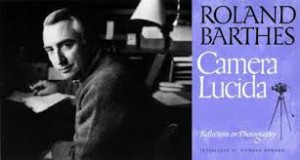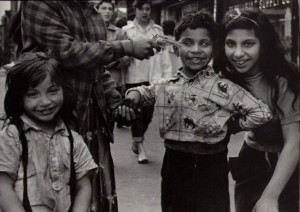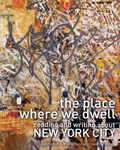Hi Class,
In reference to our discussion on Tuesday:
Art is a diverse range of human activities in creating visual, auditory or performing artifacts – artworks, expressing the author’s imaginative or technical skill, intended to be appreciated for their beauty or emotional power. In their most general form these activities include the production of works of art, the criticism of art, the study of the history of art, and the aesthetic dissemination of art.
The oldest form of art are visual arts, which include creation of images or objects in fields including painting, sculpture, printmaking, photography, and other visual media. Architecture is often included as one of the visual arts; however, like the decorative arts, it involves the creation of objects where the practical considerations of use are essential—in a way that they usually are not in a painting, for example. Music, theatre, film, dance, and other performing arts, as well as literature and other media such as interactive media, are included in a broader definition of art or the arts. Until the 17th century, art referred to any skill or mastery and was not differentiated from crafts or sciences. In modern usage after the 17th century, where aesthetic considerations are paramount, the fine arts are separated and distinguished from acquired skills in general, such as the decorative or applied arts. (Wikipedia)
Further questions:
1. What is a photograph?
2. Why do we take, keep, share, and discard photographs?
3. How should we make sense of photographs? What methods can we use to understand photos better?
We will learn several ways to read and make sense of photos. Below are some specific terms that will be important for Essay 2.
The French sociologist and critic Roland Barthes wrote about photography, and he came up with several useful terms for studying photographs.
1. Studium: The studium of a photograph is the public and historical background of a photo. The studium is context and it is the general understanding. The studium of a photo must be visible, and it is the cultural reading of the faces, the gestures, the buildings, the actions within a photo.
2. Punctum: The punctum of a photograph is highly individual, not public. The punctum pierces the viewer in a particular way. The punctum, which must be visible, pierces the viewer like a arrow, raising certain individual memories and consciousnesses to the surface. The punctum bruises me but not you. The punctum is about loving, while the studium is about liking.
—————————————————————————————————-
Homework for Tuesday, March 8: Take a few photos and chose one that has a geometric composition. Post that photograph (make sure that the image size is under 1 Mb) that you have taken to our OpenLab site then describe it under the photo in terms of subject, setting, light, color, and any filter you used. Make sure to proof and edit your writing because this is a public site!
Here is an example of a picture that I took and my description:

Manhattan-Stonehenge, 2011, Sean Scanlan
I took this picture in the early spring of 2011. The shot is of the sun as it is framed by skyscrapers on either side of E. 21st St., looking West, of course. The sun is setting and seems perfectly centered by the “cliffs” or buildings. I was walking with my friend, Tom, and on our way to play ping-pong at a place called Spin, which is a few blocks north of Union Square. What is so interesting about the picture is that the lens created the effect of all the red circles, I never saw them until after clicking the shutter. I did not use any filters on this shot. The red is overwhelming, but I can still make out the street scene. At first, I did not like the white car on the right side, but after further reflection, I liked how it adds perspective and the illusion of speed. Lastly, the lens also created the effect of a bright slash that goes through the street, straight down. I like that “sword” as it bisects the frame.
————-
VIDEO CLIPS:
1. How does a digital camera work?:
https://www.youtube.com/watch?v=Ic0czeUJrGE
2. How to develop film using coffee and vitamin C:
https://www.youtube.com/watch?v=zYjOqcbBEco
3. A Darkroom in Use:
https://www.youtube.com/watch?v=nue495wxlXo
4. Five tips for taking your own digital photographs:
https://www.youtube.com/watch?v=YroMyQJ-GMQ
————————————————————————
How to Sign up, Join, and post a photo:
STEP 1: Here is a link to help you set up an account on Openlab.
https://openlab.citytech.cuny.edu/blog/help/signing-up-on-the-openlab/
STEP 2: Here is a link that will help you join my class.
https://openlab.citytech.cuny.edu/blog/help/logging-in-to-the-openlab/
The shortcut to step 2 is that you should click on the menu tab labeled “Course Profile” on this website, then go to the right side and click join now.
STEP 3: Posting a photo.
https://openlab.citytech.cuny.edu/blog/help/adding-images-to-your-site/
To add your description, just type inside the box underneath the image that you have posted. Be sure to click the blue “Update” button on the right side of the page.
If you have any questions, please email me.
Best,
Prof. Scanlan







